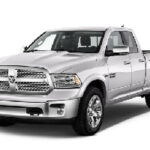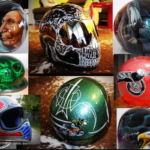The Kelley Blue Book Guide – Info Sources

Kelley Blue Book (KBB) has a long history.
It goes back all the way to 1918, making it over 100 years old!
Back then, Les Kelley decided to open his own LA car dealership. And part of his routine involved creating lists of cars he wanted to buy from nearby dealers.
This was the predecessor of the Kelley Blue Book, which is currently recognized as a normative US standard for calculating vehicle prices.
In fact, no other pricing in the US matches the depth and prowess of the Kelley Blue Book!
What Makes the Kelley Blue Book Special?
The Kelley Blue Book started off as a supplier of car information to insurance and banking industries.
This helped loaners calculate the values of cars, and thus the collaterals required for either used cards, or for auto loans on new cars.
It was a way for insurance companies to understand the replacement values of insured cars, letting them better setup the appropriate packages.
However, throughout the decades, the KBB became so widely used by all industries, to the point where the United States government used the book to set ceilings on car prices mid World War 2.
From that point onward, the KBB became a recognized standard, and dealers everywhere began to subscribe to it as a market research requirement.
Also Read: KELLEY BLUE BOOK USED CARS
The Kelley Blue Book’s Evolution
The Kelley Blue Book would exist as a trade publication for dealerships up until the 1990s. From there on, a consumer edition would be released on the market (around 1993).
Today’s Car Market
To provide some perspective on the current US car market – there are over 210 million cars on America’s roads.
In fact….
• Used cars are bought 2 ½ times as much as new cars in the United States.
• 1/3 of used cars are bought from private ends.
• 1/3 of used vehicles are bought from dealerships (franchised).
• 1/3 of used vehicles come from independent dealerships.
• 17 million+ used cars are auctioned off yearly.
How the Kelley Blue Book Affects the Previous Values
If you compare the vehicle industry to others, you’ll find that cars are much more prone to depreciation than other sectors.
For example, real estate, art, sporting equipment and other expensive purchases don’t depreciate as much as cars. And many of those lack their level of daily utility.
Also Read: How Do I Use Kelley Blue Book To Determine The Value Of An ATV?
Plus, it should be considered that unlike the previous sectors, cars must meet certain safety standards to be bought or sold. Those standards are often not discussed in private party buys and sells, which leads to lesser than retail value.
Finally, cars sold privately don’t follow any standards of safety. Also, there aren’t any legal liabilities that a dealer experiences if they sell a faulty car.
And this is where the KBB comes in. It takes a car’s condition into consideration, providing an accurate value of what it’s truly worth.
That Aside – Where Does the KBB Find its Prices?
The Kelley Blue Book studies the automobile world intensively, collecting values from a multitude of sources, which include…
Franchised and Independent Dealers
Independent dealers are those that sell used vehicles exclusively. And they sell them to all customers, from wholesalers to auctions, and even private consumers.
Also Read: How to Use the NADA Guide to Set Boat Values
Franchised dealers are those authorized by a car manufacturer to sell their cars. And they sometimes sell used cars to consumers and auctions.
Wholesale Auction
Those auctions are only accessible to dealerships (or any licensed business that sells new and used cars).
At a wholesale auction, dealerships bring vehicles to sell and trade. Additionally, they might buy vehicles which they assume may suit their store merchandise.
Multiple dealers show up at those events (providing a wide range of prices). And they include rental agencies, financial institutions, manufacturers, and fleet owners.
KBB employees are auditors at those auctions, letting them gain a comprehensive understanding of the real cash value per vehicle, and how they’ll sell at an auction.
Fleets & Rentals
After a year of servicing passes, a rental fleet will send its cars over to a wholesale auction (though sometimes, they’ll expand the usage of their vehicles).
Small Financial Institutions
Banks own the cars leased by private consumers. After that lease expires, those cars are either sold to lesser financial institutions, or to dealers at an auction.
A financial institution can also sell and trade trucks and vehicles that have been repossessed.
(OEMS) – Original Equipment Manufacturers
Here, a car manufacturer (such as Ford, Honda, etc.) brings their cars to an auction after their employees use them.
How is the Final Car’s Value Calculated?
Editor calculates the final value of a used car.
The process begins with a collection of all the models history trends, developments in the industry, location, seasonality, while discussing current economic conditions.
Following that, values are produced that represent the fluctuating market price, and thus they’re relied upon by many organizations in addition to the average customers.
What Kind of Values Can You Get From the KBB?
You can get the following…
• Private Party Values. This signifies how much buyers pay on average to get a used car from another private party.
• Trade-In Values. This is how much a customer receives in cash when they trade-in a vehicle at a dealership.
• Certified Pre-Owned Value (CPO). Those represent the asking prices that dealers offer for a car that a manufacturer’s CPO program covers.
• Fair Purchase Value. This is a reflection of how much a vehicle actually sells for. It’s based on 10,000s of registered sales from dealers throughout the US. This price isn’t calculated, nor is it formula based. Instead, it uses true sales prices, and an encyclopedic knowledge of the surrounding market.
Another Value: Suggested Retail
This represents what a dealer’s asking price is for a certain car. It is a starting price which facilities negotiations between consumers and dealers.
It’s important to note that for a car to reach suggested retail value, it needs to meet safety standards, in addition to proper commercial and mechanical and cosmetic refurbishing before selling.








Leave a Reply